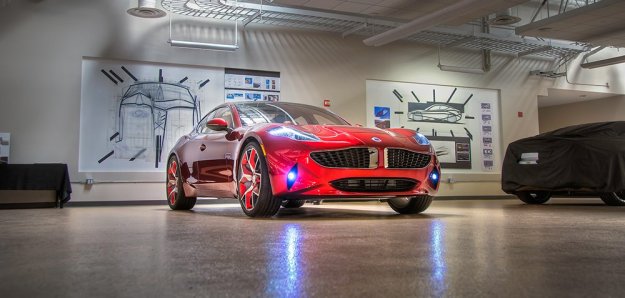
Fisker Automotive, makers of the gorgeous, yet beleaguered Fisker Karma plug-in hybrid, are turning to Asia – China specifically — for additional funding opportunities, according to Reuters, after initial searches conducted in Europe have proved unsuccessful.
According to Reuters, Fisker has held a number of Chinese companies, including China Grand Automotive, a dealership group that has already agreed to distribute Fiskers in the People’s Republic, and Wanxiang Group who now own Fisker’s battery supplier, A123 Systems.
The Anaheim-based automaker, spearheaded by former BMW designer Henrik Fisker, is in desperate need of additional funding and has been courting investors after a depressingly rocky 2012 saw the company beset with setbacks.
Both Fisker and the Karma have been in the hot seat for some time now, beginning with an incident involving a Consumer Report’s Karma that failed to start during a review, a series of unexplainable Karma fires thought to have originated spontaneously from the vehicle, and culminating in the bankruptcy of Fisker’s lithium-ion battery supplier, A123 Systems. Not to mention the hundreds of vehicles Fisker lost at its Newark Port during Hurricane Sandy’s devastation of the New Jersey and New York coastline.
Fisker’s financial woes haven’t just offset its board member’s bank accounts; the lack of funds has placed the company’s Atlantic model in a precarious situation. Right now, Fisker only sells the Karma, which currently starts at $100,000 – hardly an everyman vehicle. The Atlantic, originally known as Project Nina, is expected to be a higher volume, less expensive (to the tune of $55,000)) alternative, one that could potentially right the company’s wayward ship.
As it turns out, Fisker’s financial waters haven’t always been so murky. Originally, the automotive startup received Department of Energy loans to help get a U.S. plant up and running. This plant would have housed production of the Atlantic. The DOE loan totaled $329 million, but because of its less than stable financial situation those funds have been drawn down to $190 million, and to date, Fisker needs about $150 million in additional funds to complete development of the Atlantic.
Fisker has also had to contend with Tesla and its award-winning, all-electric Model S, a vehicle many within the auto industry thought the Karma would easily swat aside. In addition to seeking salvation by way of additional funding, Fisker would do well to emulate Tesla, which gained not only crucial investment through a public offering, but strategic partnerships with both Daimler AG and Toyota. The latter having recently sourced Tesla’s drivetrain technology into its all-electric RAV4 EV.
Whatever the case may be, one thing is clear: Fisker needs the funds – and fast. Otherwise there will be no electrons left in the battery to keep the company going.


